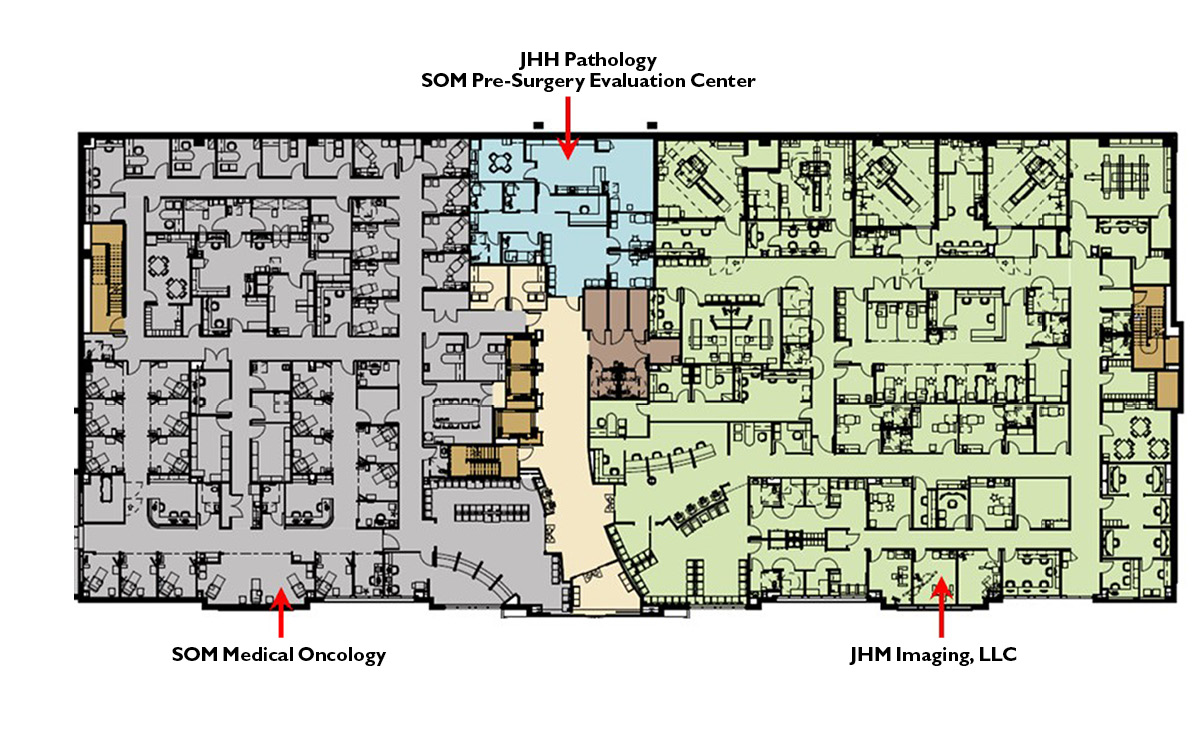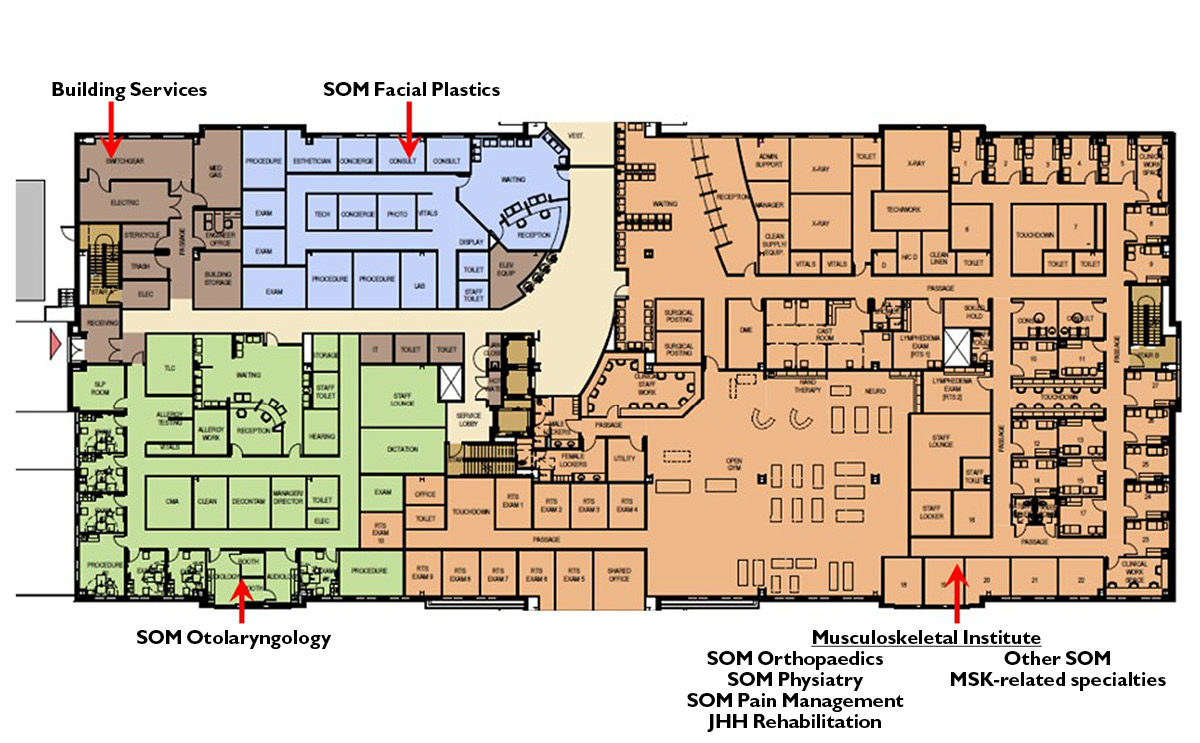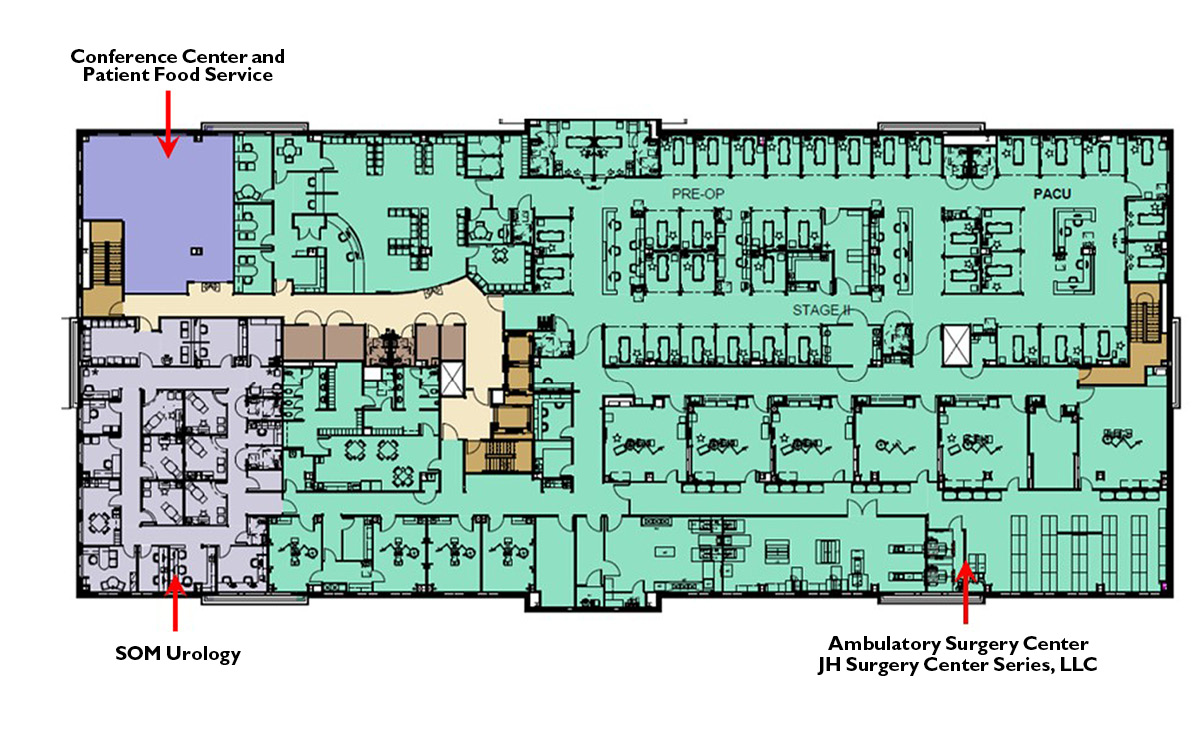Since 1994, when it opened its first building in the Lutherville area of Baltimore County, Johns Hopkins Health Care & Surgery Center has played a key role in Johns Hopkins Medicine’s strategy to provide quality ambulatory care in a community setting. This year marks the 25th anniversary of Johns Hopkins at Green Spring Station and also introduces a new chapter of outpatient care with the opening of a new building.
Pavilion III joins Pavilions I and II and the Falls, Joppa and Foxleigh buildings at Green Spring Station, and will expand outpatient clinical and ambulatory surgical services. The clinical practices are slated to open in late May, and a new ambulatory surgical center is set to open in August.
Pavilion III
The three-story, 110,000-square-foot, state-of-the-art building will house outpatient clinical suites and ancillary departments moving from other locations on the Green Spring campus, as well as new clinical areas. An ambulatory surgical center — one of the largest in Maryland — will occupy the third floor.
“The addition of Pavilion III supports our strategic objective to make Johns Hopkins Medicine easy,” says Gill Wylie, president of Johns Hopkins Medical Management. “By providing the space we need to grow, we are increasing and improving access to patient-centered care in our communities, and The Johns Hopkins Hospital is able to focus on providing services to patients who truly need to be cared for in a hospital.” For the past three years, Wylie has overseen the planning and construction of the building, working closely with the clinical departments and surgical teams that will use the building on its design, space and technology needs. He estimates the addition of Pavilion III will increase the number of patient encounters at Green Spring Station from 550,000 to more than 750,000 per year.
Clinical and Ancillary Services
Clinical departments and services in Pavilion III will include anesthesia, medical oncology, otolaryngology, facial plastics, urology, interventional radiology and imaging. A comprehensive musculoskeletal center will combine orthopaedics, physical medicine and rehabilitation services such as pain management while also offering a full rehabilitation gymnasium. Stephen Sisson, vice president of clinical operations for the Office of Johns Hopkins Physicians, believes the inclusion of these services makes Green Spring Station a great choice for comprehensive outpatient care in a community setting.
Additionally, Pavilion III will centralize imaging services and procedures formerly located in five areas throughout the Green Spring Station campus, a move that will allow for increased efficiency.
Patient flow and efficiency are key to ensuring an optimal patient experience. During the planning of Pavilion III, Dr. Sisson and members of the clinical departments collaborated with subject matter experts to monitor wait times, staff efficiencies and workflows for outpatient clinical services to ensure that Green Spring Station is following best practices for creating a first-rate patient experience.
“We created several scenarios, including safety and infection control, to certify our clinical staff meets Johns Hopkins’ expectation,” he says.
The opening of Pavilion III also means that clinical services in Pavilions I and II such as the women’s center, fertility center, Wilmer consultation, dermatology and internal medicine can expand and provide increased access for patients. Additionally, Pavilion I will feature its first positron emission tomography (PET) scanner.
Ambulatory Surgery
Many of the simpler ear, nose and throat, urologic, and orthopaedic procedures traditionally performed in hospitals are no longer being reimbursed by payers in that setting. Instead, outpatient surgery centers have become increasingly vital to providing quality care while ensuring that such procedures are affordable for patients and providers.
Patrick Byrne, who directs the new ambulatory surgery center as well as the division of facial plastic and reconstructive surgery at Johns Hopkins, says that urologic procedures serve as an example of this important shift. He notes that the Department of Urology will be a new presence on the Green Spring Station campus.
“Moving many of the urologic procedures from The Johns Hopkins Hospital to an outpatient setting allows us to continue to perform these surgeries in a location that is convenient and more cost-effective for the patient. Focusing on both quality and efficiency through preoperative evaluations and processes that shorten turnover times will give Green Spring Station an identity for outstanding quality care.”
The Johns Hopkins Hospital also benefits from the expansion at Green Spring Station. By moving some of the outpatient and routine surgical services to that campus, the hospital will increase its capacity for patients who need treatment that is more complex, as well as its ability to provide care for the East Baltimore community.
Events celebrating the 25th anniversary of Johns Hopkins at Green Spring Station and tours of Pavilion III will be scheduled this summer and throughout the remainder of the year.




